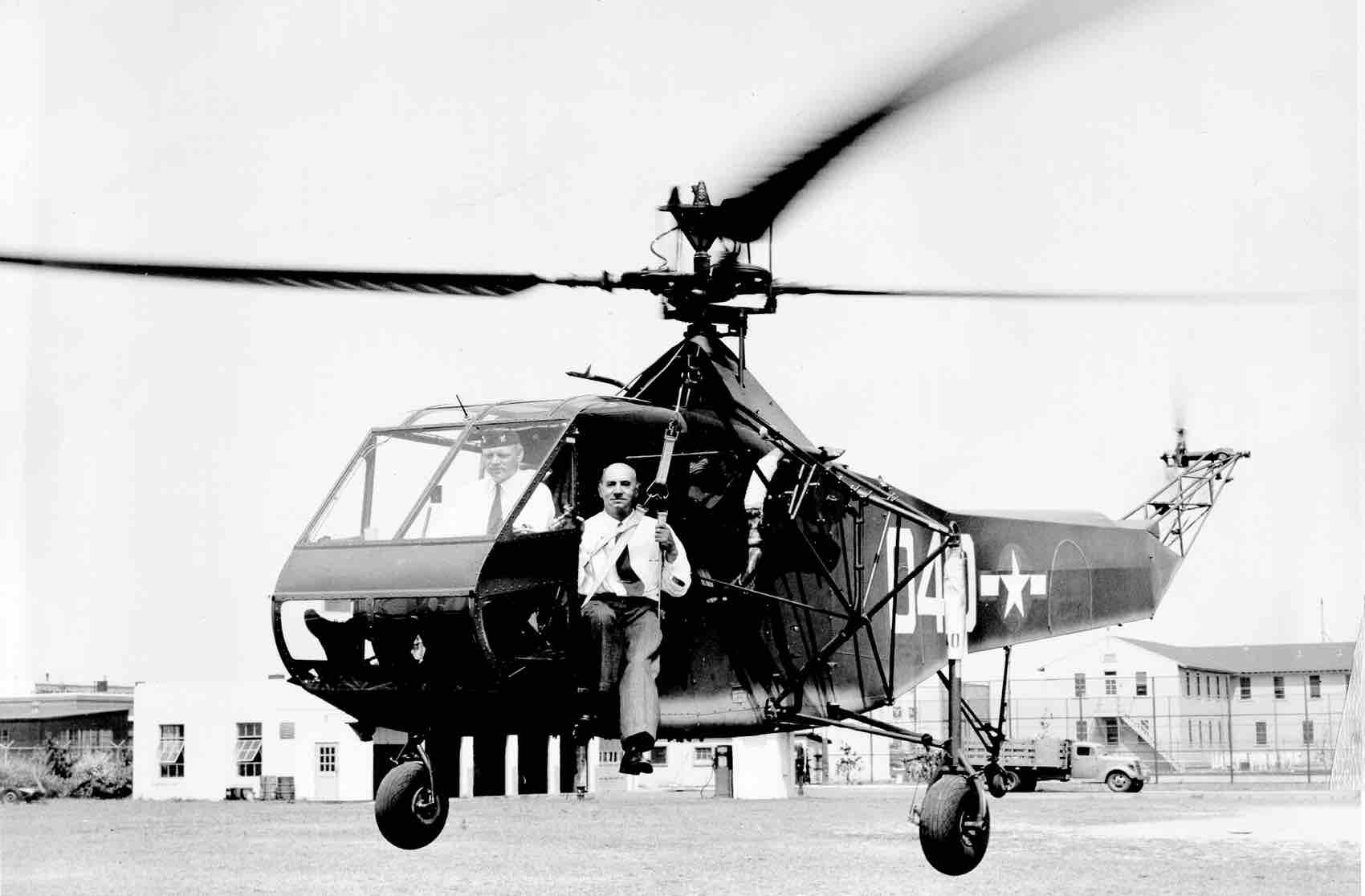My first job came about when my father insisted that there wasn’t much of a future for me working as a part-time chambermaid and shoe salesperson and I needed to find real employment. He was working at Sikorsky Aircraft, the largest manufacturer of helicopters in the world, at the time. He figured in a place as huge as that, there must be a good job for me.
And so he arranged some interviews and one day I changed from sneakers into high heels and took the train and two buses to scary Bridgeport, Conn., factory district where I presented myself at the Sikorsky personnel department, not quite sure of what I was doing there. My father had arranged an interview for a position in the spectography lab, a frightening place with people in white coats all seemingly engrossed in spectographing, whatever that was. I sure didn’t know. I was not, shall we say, the candidate they had been looking for.
Back at personnel, where I was turning in my visitor’s pass, a guy from the engineering department commented on my neat handwriting (lefty that I am) and said there was an opening for an engineering aide and training was included. The money seemed fantastic, $100 a week, and it would get my father off my back.
My duties consisted of hand lettering information obtained while the helicopters we built were tested, and retested under all kinds of maneuvers, under all kinds of conditions. I and three other women worked in a department that was made up of about 30 really smart, good-looking and, for the most part, single guys who were making terrific money. I was soon strolling around different departments with my slide rule and clipboard, looking, I hoped, extremely competent.
In time I learned to absolutely love that job. My duties consisted of recording and reducing data that had been collected during test flights. The work, where I would spend days hand lettering charts and graphs, is now done electronically in an instant.
It was a time of great excitement in the aircraft industry. Helicopters were being developed to carry more, go faster and operate under all kinds of conditions. There was a time when I could identify any “chopper” model that flew. Today, I do well to pick out a Black Hawk.
I can remember walking through the big hanger and seeing ‘copters with insignia from countries all over the world. I got to take a ride in the first presidential helicopter when it was undergoing final testing before delivery. I had been used to deafeningly noisy, stripped-down, utilitarian aircrafts; this one had carpeting and little blue curtains on the windows.
Little did I know at the time that one day a helicopter would save the life of my critically wounded brother by scooping him up from a battlefield in Vietnam. He had also had a job at Sikorsky before going in the Army.
The news broadcasts these days so often feature these remarkable machines that have proved their worth, over and over. Whether it be rescuing people from rooftops during the devastating floods in Louisiana, searching for survivors in earthquake-ravaged Pakistan, ferrying supplies and medical personnel to the starving people in Africa, and saving lives in yet another senseless war, there are my helicopters.
I recently asked a friend who had worked with me back some 45-plus years ago if she still gets a feeling of ownership when she hears that unmistakable rotor sound. She answered that she still thinks “There goes one of ours.”
It’s a proud feeling.


